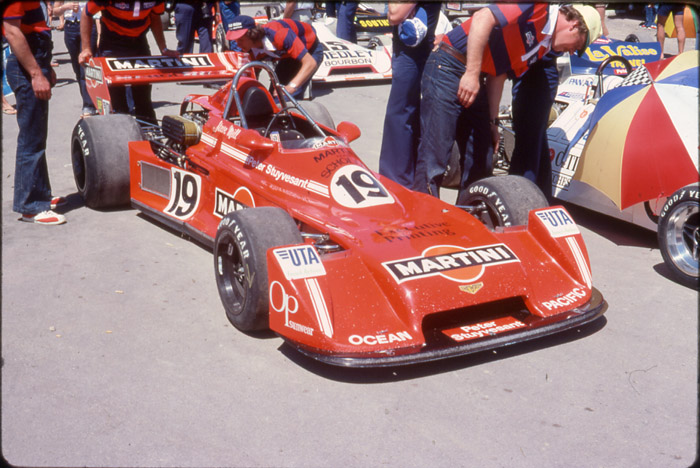-
Administrator

Formula Atlantic/Pacific

Formula Atlantic was formed in the late 1960s, in the US, under the guise Formula B. The Sports Car Club of America created Formula B to fit between Formula C, for cars with a maximum engine size up to 1100cc, and Formula A, for stock block race cars with a maximum engine size of 5000cc, as part of its new SCCA Grand Prix Championship. Initially, all three classes competed in the same race, but as Formula A rapidly grew in popularity, Formula B became a stand-alone class.
Formula B engine rules required a stock block engine of no larger than 1600cc, for which the Ford twin-cam unit was highly favoured.
Formula B was introduced in England in 1971 by John Webb, as Formula Atlantic. The intention was that Formula Atlantic cars be almost as fast as Formula 2 cars, but cheaper to purchase and run. The Formula Atlantic name was also used in Canada, where a high profile championship was established in 1974, with national television coverage, and the addition of Formula 1 drivers. The International Motor Sport Association (IMSA) then formed a Formula Atlantic championship of its own to run alongside its other categories.
Formula Atlantic was adopted for the Macau Grand Prix in 1977, but under the guise Formula Pacific, and New Zealand replaced the outgoing Formula 5000 with Formula Pacific the same year, while Japan followed suit a year later. In 1979, Australia merged its existing Formula 5000 with Formula Pacific to boost grids, and Formula Pacific would become that countries premier single seater category from 1982.
Formula Atlantic/Pacific chassis’ bore many similarities with F2 and F3 cars, and F2 or F3 chassis’ could easily be adapted for Formula Atlantic, but several manufacturers built chassis’ specifically for the formula. Engine choices in the early years were limited to the Ford twin-cam, but this was soon replaced by the BDA, and BDD, etc, and eventually the Toyota. The mid-1970s saw a raft of different makes of chassis, but eventually the Ralt RT4, based on the 1979 RT2, would come to dominate the category, as likewise, the American Swift DB4 would do several years later.
Formula Atlantic cars remain some of the best looking of all formula cars. The class became synonymous with its screaming BDA/BDD soundtrack, and aggressive cut and thrust driving, as it was established very much as a platform for young aspiring drivers with Formula 1 ambitions, and Formula Atlantic/Pacific proved an important stepping stone for many who reached the very top level of the sport.
 Posting Permissions
Posting Permissions
- You may not post new threads
- You may not post replies
- You may not post attachments
- You may not edit your posts
-
Forum Rules






 Reply With Quote
Reply With Quote